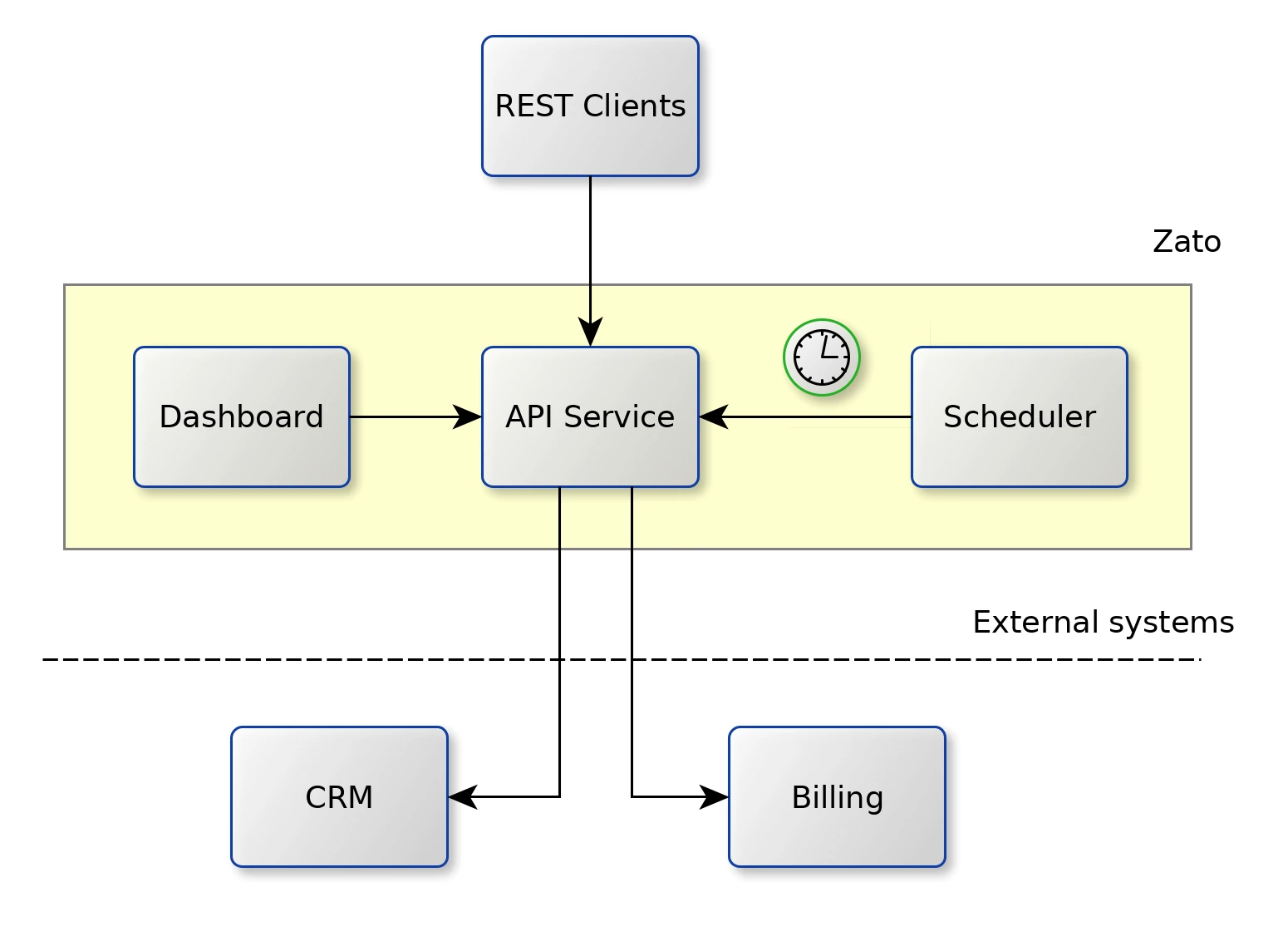Do you know what airports, telecom operators, defense forces and health care organizations have in common?
They all rely heavily on deep-backend software systems which are integrated and automated using principled methodologies, innovative techniques and well-defined implementation frameworks.
If you'd like to learn how to integrate and automate such complex systems correctly, head over to the new API integration tutorial that will show you how to do it in Python too.

# -*- coding: utf-8 -*-
# Zato
from zato.server.service import Service
# ##############################################################################
class MyService(Service):
""" Returns user details by the person's name.
"""
name = 'api.my-service'
# I/O definition
input = '-name'
output = 'user_type', 'account_no', 'account_balance'
def handle(self):
# For later use
name = self.request.input.name or 'partner'
# REST connections
crm_conn = self.out.rest['CRM'].conn
billing_conn = self.out.rest['Billing'].conn
# Prepare requests
crm_request = {'UserName':name}
billing_params = {'USER':name}
# Get data from CRM
crm_data = crm_conn.get(self.cid, crm_request).data
# Get data from Billing
billing_data = billing_conn.post(self.cid, params=billing_params).data
# Extract the business information from both systems
user_type = crm_data['UserType']
account_no = crm_data['AccountNumber']
account_balance = billing_data['ACC_BALANCE']
self.logger.info(f'cid:{self.cid} Returning user details for {name}')
# Now, produce the response for our caller
self.response.payload = {
'user_type': user_type,
'account_no': account_no,
'account_balance': account_balance,
}
# ##############################################################################

➤ API programming screenshots
➤ Here's the API integration tutorial again
➤ More API programming examples in Python
➤ Open-source iPaaS in Python